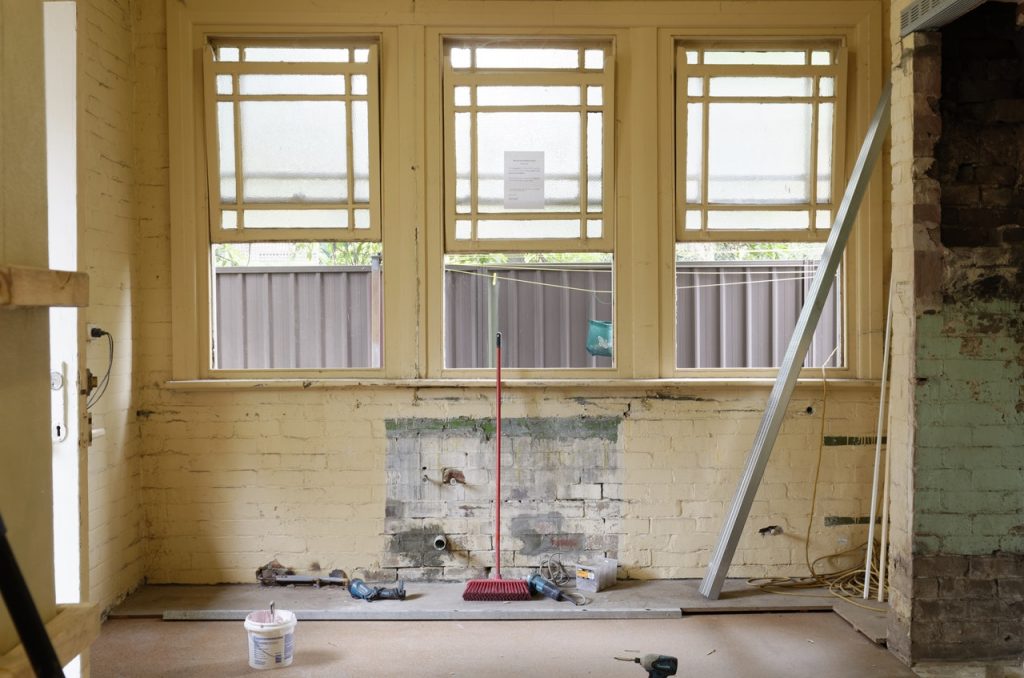Though renovation is costly when you are inexperienced, there are ways to ensure that you cut unnecessary costs when your house calls for regular or irregular improvements. Here are a few DIY (Do It Yourself) ideas that can come in handy:
- Don’t assume you can buy everything cheaper yourself
Assuming you can buy plumbing essentials at a discount is a common mistake people make. Don’t go on a shopping spree before consulting professional home appliance traders. They have the best deals and advice that could help you save money and do a great job. Unless you are familiar with building materials such as glue laminated timber and the current market situation, your best bet should be on experienced retailers. How do you find them? Ask local traders, do some research, use your friends, or get information from your neighbors.
- Can I get by with a coat of paint?
Adding a coat of paint to various surfaces transforms a room in unimaginable ways. Interior gold coast will tell you the same thing. Old walls tend to have unattractive discolorations followed by ugly scrapes that ruin the interior appearance of a house. All you need is a brush and paint; use the internet to learn how to apply smoothly and stroke evenly without smearing color all over your clothes, body, and other clean surfaces. You can also proceed to repaint the kitchen cabinets, closet, bathrooms, ceramic basins, drawers, and bookshelves among others.
- Do I need an architect?
Though you have access to numerous YouTube videos for guidance, you still need an architect to interpret your plan and offer advice where necessary. Never try to renovate with a plan and a detailed design to ensure you cover the entire project. There will be charges incurred, but it is better than relying on yourself and the internet. You still need authorization from the local council and who better to show you the right way than an expert? In case your design requires modification, a drafter will have some useful inputs to help you achieve the desired plan. Remember, one wrong or insufficient detail could ruin your budget or worse. Consider your interior design elements carefully in the planning and execution stages to make sure you are happy with the final product.
- Don’t move plumbing and electricals
Under no circumstance should you move plumbing and electrical fixtures without a professional opinion. While renovating the bathroom or kitchen, stay away from the pipes and other appliances that call for a plumber or electrician. Why? Damaging them will lead to extra costs. Besides, you may not be ready to see what you uncover when you decide to relocate toilets, showers, and sinks. Also, electrical appliances are naturally fragile. One simple cut could expose a live wire (which is hazardous) or affect the entire system without your knowledge or the experts.

- Look for economical ways to add natural light
There are economical ways you could use to add natural light to your home. For instance; opting for cheaper and easier alternatives while installing bifold windows and doors can come in handy. A window overlooking the fence could reflect more light if you apply a pale or white color to it. Skylights and light tubes don’t require professional approval though it’s advisable to check with your local council just incase they interfere with structural timber beams. They are cheap too.
- Buy secondhand and seconds wisely
There are numerous online stores with cheap yet functioning items you can use. Also, scrapyards, garage sales, and secondhand building suppliers happen to have great deals and will contain eco outdoor furniture (adding an element of natural style to your home) especially on eBay, GraysOnline, and Trading Post. To avoid impulsive purchases, undertake extensive research on what you need and how much it costs; preferably on all websites. You can easily be carried away by the difference between brand new and second-hand item prices. You can also recycle useful objects retrieved from your home after being demolished. It will save you cleaning time and garbage disposal charges.
- Break into a sweat
Without touching the plumbing and electrical systems, you are capable of accomplishing minor demolishing tasks like;
- Stripping tiles off
- Dismantling the kitchen cabinets
- Patch walls and sand them if you have experience
- Paint your room, shelves, drawers, and cabinets
- Pull up flooring
- Clean your working area and stack up bricks.
- Measure twice, cut once
Before diving into cutting a new bench-top or glazing for a window, countercheck your measurements. Your plans for the kitchen and bathroom renovations should be flawless to avoid wasting valuable resources and saving time. Suppose you need 4×6 tiles to redo the family room, but you have provided the retailer with 4×4 measurements. When the boxes arrive, you realize they don’t fit, and the receipt states that ‘goods once sold are never returned’ Even with great creativity, there will be extra costs incurred.
The above renovation ideas will help you attain the ultimate goal which includes restoring your house into a masterpiece without unnecessary stress. First of all, seek a professional opinion, budget, and make a plan. Assign yourself tasks you can accomplish to cut costs and leave the rest to an expert. Also, make use of your family and friends for manual labor, you can always reward them with some bondi wash which they will appreciate helping to clean all types of surfaces. Remember to notify the local authorities and neighbors about the renovations as well. The rule that cheap is expensive and vice versa still applies. Inquire before ordering any items online or physical stores. If you had no clue about how to rebrand your home; now you know.



